When we think about Victoria’s food culture we usually associate it with the post World War II migrants who settled here. Their recipes, ingredients and food production techniques helped transform the way we eat, the meals we cook and how we socialise. But little is known about the diet and eating habits of the migrants who settled in Victoria in the 19th century.
Prior to European settlement, the Kulin people, the traditional land owners, lived off the land – gathering root plants, berries and flowers, hunting native animals and catching seafood. Their vast experience living on the land meant that they developed an intricate knowledge of food and agricultural techniques.
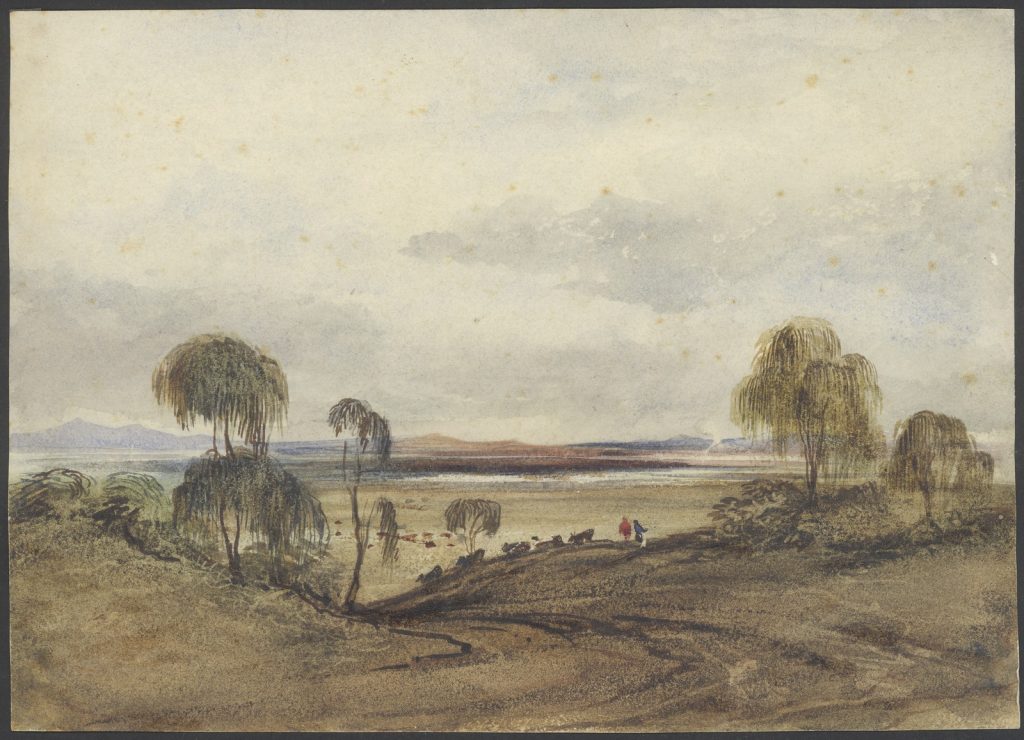
The early settlers of the Port Phillip District came mainly from Britain and Ireland and showed little interest in indigenous foods. They arrived with a plentiful supply of mutton, flour, sugar and tea, which they frequently traded with the Kulin people. The introduction of these foods and the rapid expansion of the pastoral industry had a profound effect on the Aboriginal people. ‘The Kulin were gradually de-skilled and pauperised once they stopped making possum-skin cloaks and catching bush foods, relying on blankets, flour and mutton instead’ 1
During their first years in the colony, settlers relied heavily on imported food, such as salted meats, dried legumes and preserved goods – soups, meats and vegetables, that were guaranteed to last for years. As they’d brought livestock with them there was a plentiful supply of meat for the colony. Meat and flour were the main staples of their diet, with the average weekly ration for a labourer or servant being ten pounds of meat (mainly mutton), nine pounds of flour (to make damper and pancakes), two ounces of tea and one and a half pounds of sugar. 2

As the population grew, so did the demand for fresh produce. A number of English, Scottish and Irish families established market gardens and orchards north of Melbourne, around Merri Creek, and south, in the Brighton area. Many farmers established grain crops but as the city expanded these farms were taken over and pushed further out.
In the city, people could get meals in most of the hotels, inns and eating houses. For instance, in the London Eating and Boarding Establishment you could find hot joints, mutton pies, three types of soups, and ‘Fish, flesh and fowl of the choicest kind’. 3 In the 1850’s an English immigrant, David T. Way was credited with opening the first four-penny, six-penny and shilling restaurants in Melbourne, where people could be guaranteed a simple but substantial meal. These restaurants operated at the same prices for more than 50 years. 4

In June 1858 came the grand opening of the Café de Paris restaurant, situated within the Theatre Royal, one of the first `European style’ fine dining restaurants to open in Melbourne. Managed by two English restaurateurs, Felix William Spiers and Christopher Pond, its daily bill of fare comprised of ‘the plain well-dressed joint, the most recherche made dishes, poultry, game, tarts, confectionery, with every kind of vegetables and fruit in season’. 5 Or, for two shillings you could get a steak, mashed potato and a bottle of English ale. 6
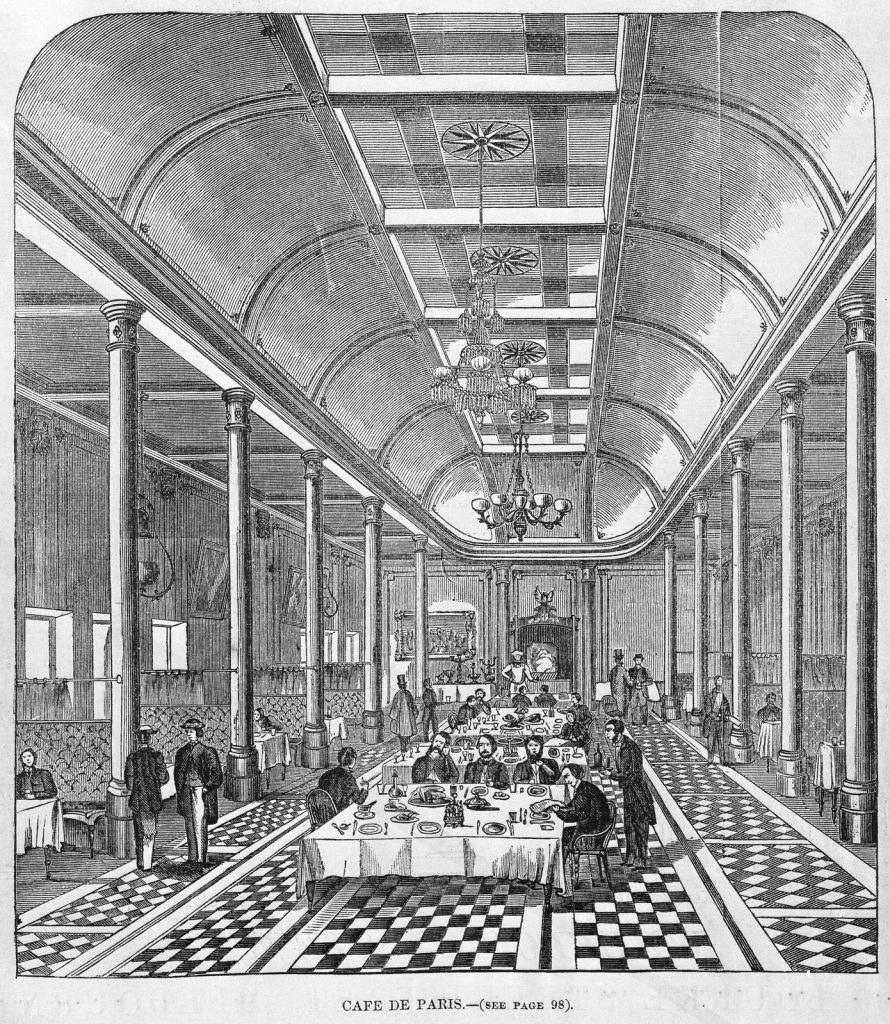
The discovery of gold saw a massive influx of immigrants coming to Victoria, with over 600,000 people arriving between 1851-60. People from Britain, Ireland, Europe, China and the United States all flocked to the goldfields hoping to make their fortune, and they all needed food, equipment and shelter. Many enterprising migrants soon realised their own fortune could be more easily made by providing food, supplies and lodgings to the miners. Throughout the goldfields dozens of general stores, boarding houses, hotels and cafes were hurriedly erected. A number of Chinese immigrants set up cook shops in the goldfields preparing either English or traditional Cantonese meals, whilst others maintained small market gardens.
The Chinese also played an important role in the development of Victoria’s fishing industry. Based in coastal towns, they would catch or purchase fish, cure it and then sell it to the Melbourne markets or to their compatriots in the goldfields. 7
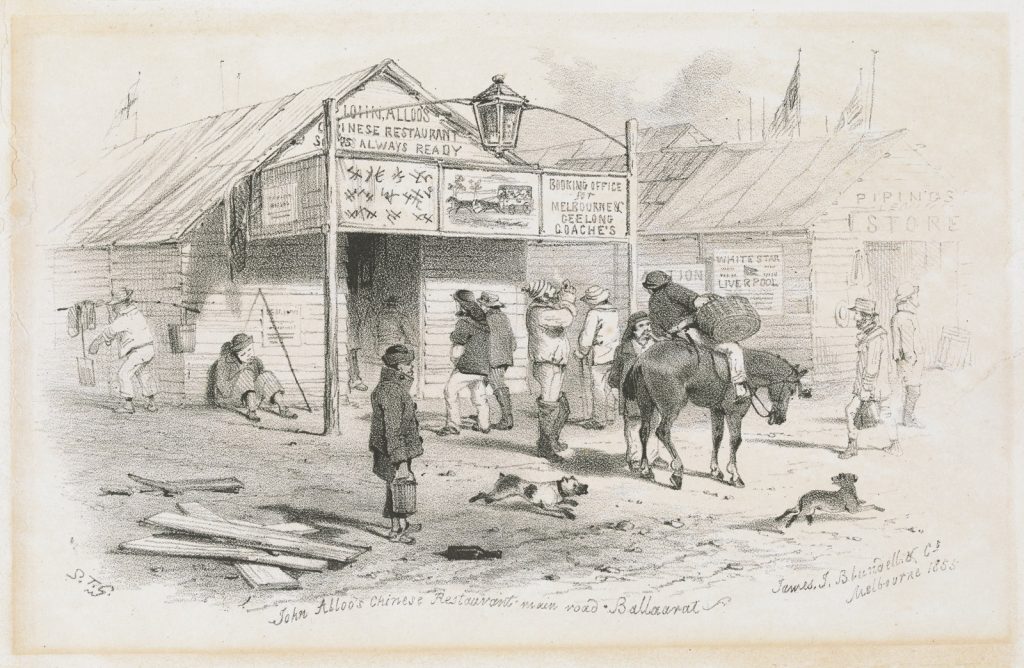
When gold mining started to decline, people began to move on, either returning to their home country, moving elsewhere in Victoria, or travelling interstate.
German miners went on to form farming settlements close to Melbourne, where they farmed meat, dairy, fruit and vegetables. 8 Other German families settled in Hamilton before relocating to the Wimmera in the 1870s, establishing one of the best methods of wheat farming in the state. 9 In Bendigo, Spanish families started growing tomatoes, using their traditional techniques. 10 Swiss-Italian migrants settled in the Hepburn Springs area, operating dairy farms and cultivating grape vines. Other European immigrants also established vineyards in Victoria, particularly in the Geelong and Yarra Valley regions.
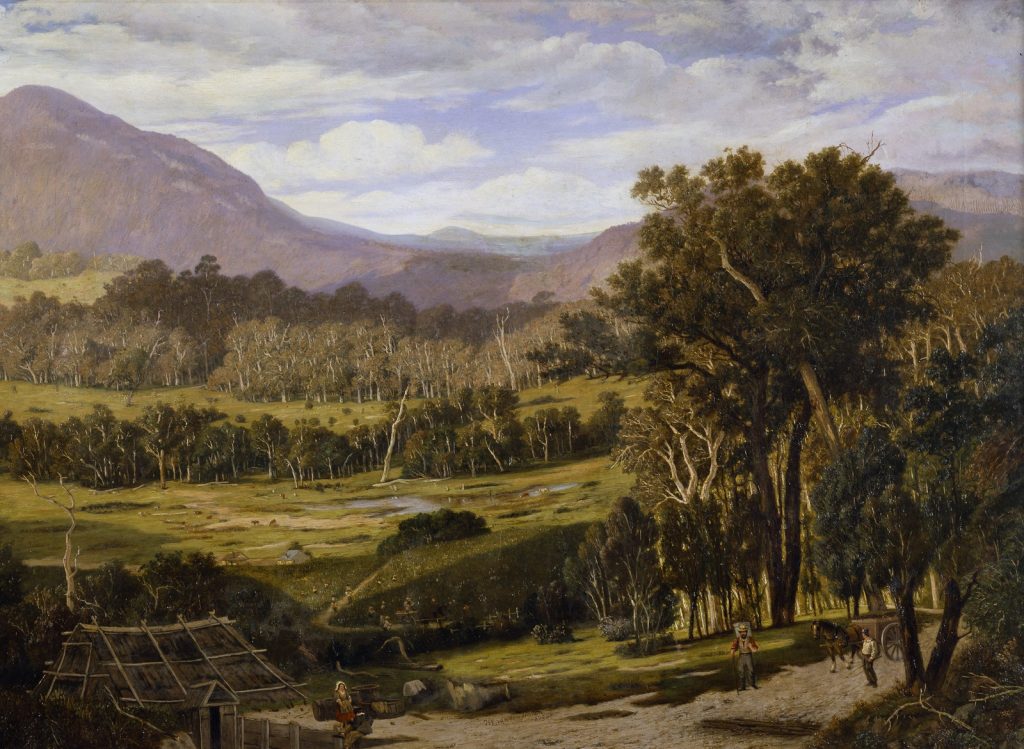
The Chinese miners who had established market gardens in the goldfields areas continued to expand their gardens, turning them into profitable businesses. By 1869, Chinese farmers were running over 800 markets, with 400 in Beechworth and 200 in Bendigo. 11 Many of these farmers and their families remained in rural Victoria, whilst others moved closer to Melbourne, establishing new and highly successful market gardens.
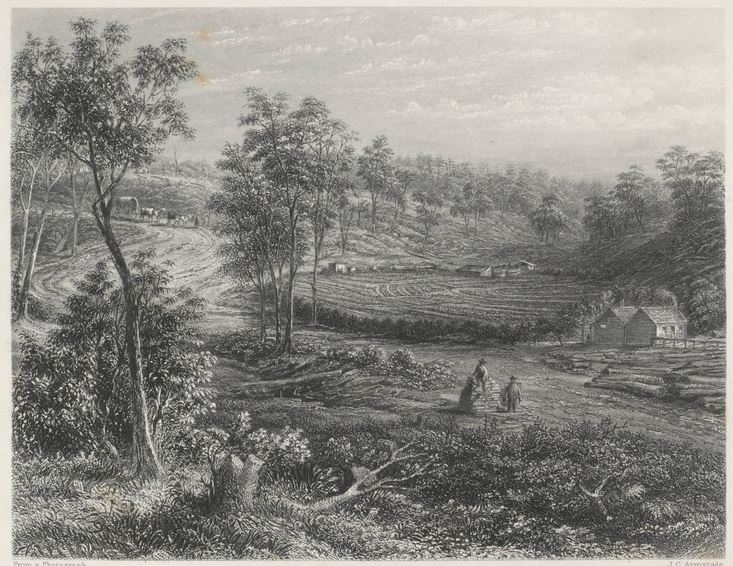
Migrants also found work in the burgeoning food industry, establishing canneries and producing confectionery, preserves, spices and dried goods. This article on the International Exhibition of 1880, lists a sample of the products produced in Victoria at that time. Other European immigrants went into retail, opening grocery shops, butchers and green grocers.
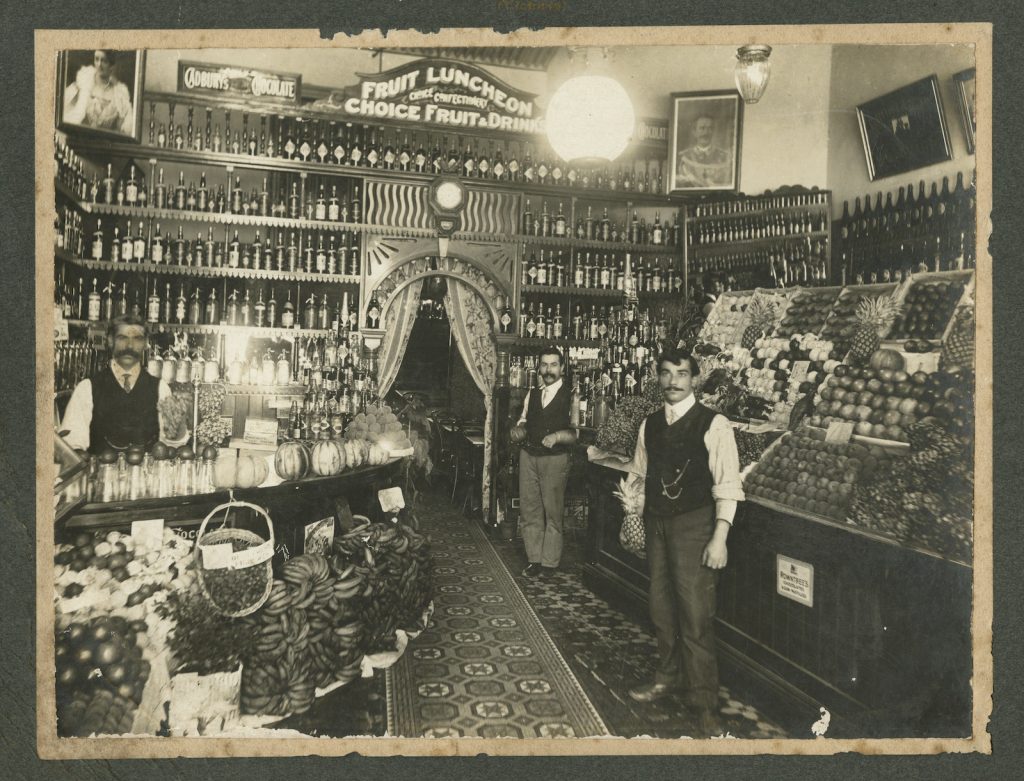
By the 1890s, a number of Chinese restaurants had opened in the eastern end of Little Bourke Street. The Sands and McDougall directories of the late 19th century show the expansion of Chinatown listing Chinese grocers, tea and fruit merchants, furniture manufacturers and fruiterers.
A number of Continental restaurants also appeared, including Parer’s Crystal Café owned by Spanish brothers John and Philip Parer; Cafe Gunsler, later known as the Vienna Cafe, created by the French chef J. F. Gunsler; Maison Doree, owned by Noel Lacaton and Cafe Anglais and Cafe Denat (now known as Cafe Florentino), both created by Monsieur Calixte Denat. Fasoli’s, a favourite haunt of Melbourne’s Bohemian was owned by a Swiss Italian, Vincent Fasoli. Here you could find a meal of salami, salad, a meat dish, sweets, cheese and coffee, all for one and threepence. 12. Many years after these establishments had closed, they were still remembered as the finest restaurants that Melbourne had seen.
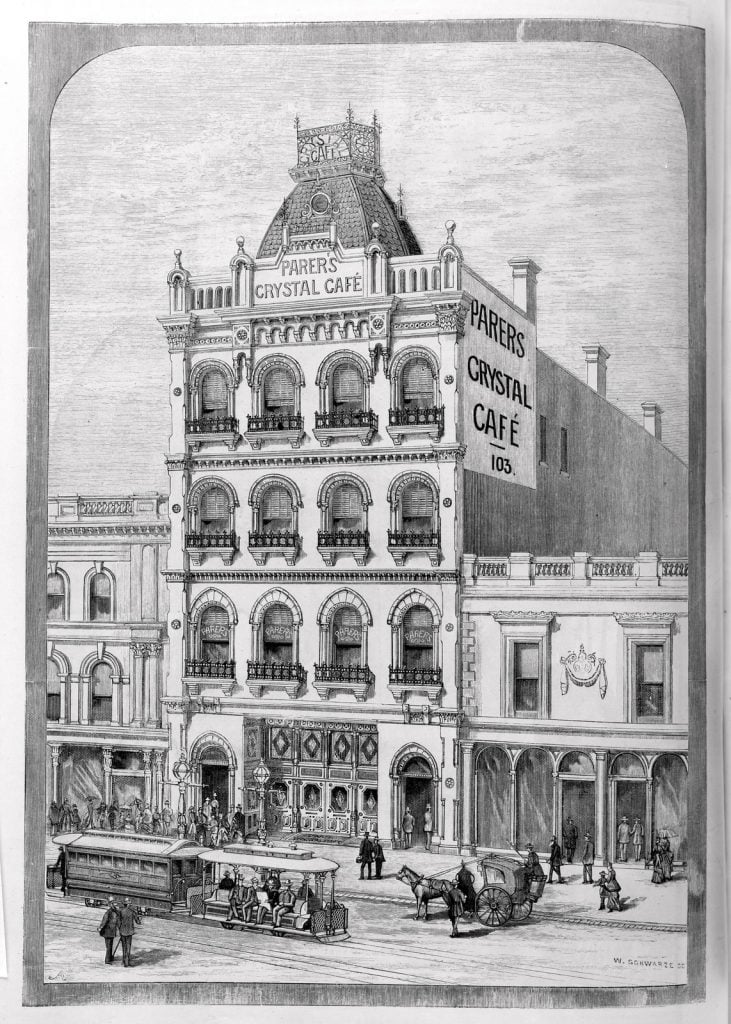
From boiled mutton and damper, to salami and Osso Bucco, the food culture in Victoria had slowly started to change. The next century would see an even greater arrival of migrants, coming from every corner of the world, who would help to create the diverse and rich food culture that we now know. That’s another blog post waiting to be written!
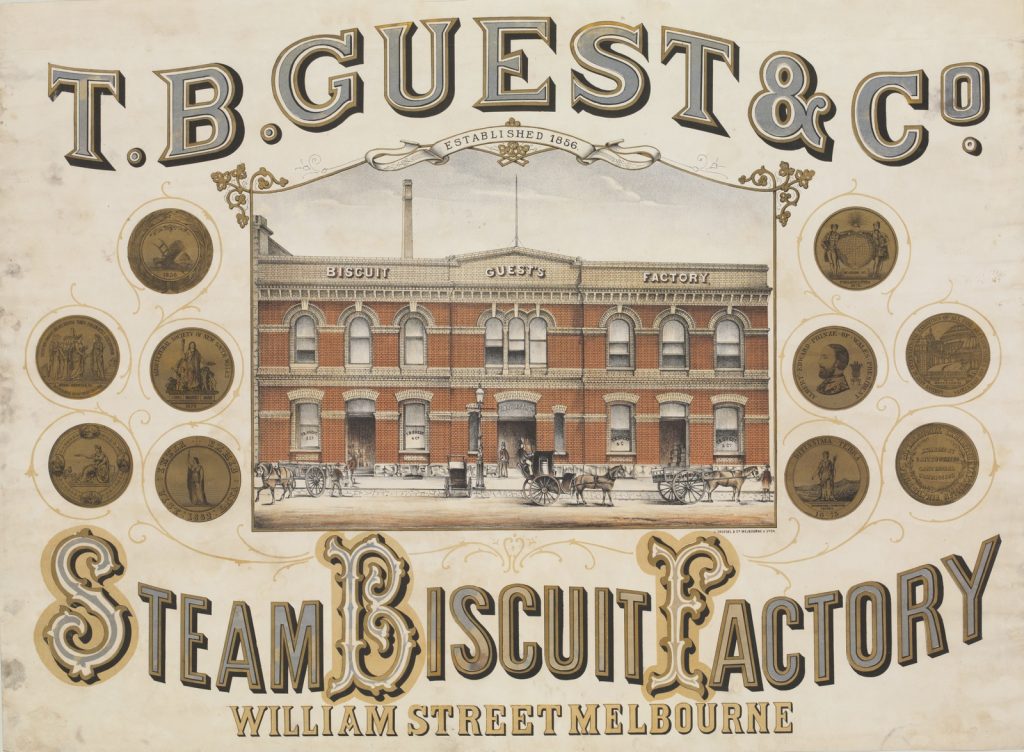
Further information
- Food in Victoria. Our online research guide will help to explore the story of food in Victoria. It includes information on cooking, cookbooks, Indigenous foods, restaurants and agriculture.
- Food in early Victoria – this State Library Victoria blog post looks at some of the early cookbooks produced in Victoria.
- Temperance and Melbourne’s grand coffee palaces – State Library Victoria blog post.
- eMelbourne – Restaurants and cafes. Rita Erlich has written a brief history of the history of Melbourne eating establishments over the last 160 years.
- Australian food history timeline. This website traces the history of Australian food since white settlement in 1788.
Reference list
- Broome, Richard. Aboriginal Victorians [electronic Resource] : A History since 1800. Crows Nest, NSW: Allen & Unwin, 2005, p. 19.
- Mackenzie, E. Emigrant’s Guide to Australia : With a Memoir of Mrs. Chisholm. London: Clarke, Beeton &, 1852, p. 110.
- ‘Advertising’, The Argus, 15 September 1848, p. 1. Retrieved: 20 Oct 2020 http://nla.gov.au/nla.news-article4775012.
- Symons, Michael, and ProQuest. One Continuous Picnic : A Gastronomic History of Australia . 2nd ed. ProQuest Ebook Central. Carlton, Vic.: Melbourne University Press, 2007. p. 121.
- ‘Advertising’, The Age, 5 June 1858, p. 6. Retrieved: 20 Oct 2020 http://nla.gov.au/nla.news-article154857669.
- Opinions of the Press on Messrs. Spiers & Pond’s Management of the Café De Paris, Melbourne : And of Many of the Principal Enterprises with Which They Have Been Connected. Melbourne: Printed at the Herald Office, 1861. p. 9.
- Bowen, Alister. The Chinese Involvement in Victoria’s Colonial Fishing Industry. Accessed 12 October 2020. http://chinese-heritage.tripod.com/fish_curing.htm
- Wehner, Volkhard, The German-speaking Community of Victoria between 1850 and 1930 : Origin, Progress and Decline. Berlin: Lit Verlag Dr. W. Hopf, 2018. p. 71.
- ‘Wimmera Farming’ Border Chronicle, 12 February 1909, p. 2. Retrieved: 20 Oct 2020 http://nla.gov.au/nla.news-article212436333.
- Symons, Michael, and ProQuest. One Continuous Picnic : A Gastronomic History of Australia . 2nd ed. ProQuest Ebook Central. Carlton, Vic.: Melbourne University Press, 2007. p. 228.
- Young, W., Rev. Report on the condition of the Chinese population in Victoria, (PDF) John Ferres, Government Printer, Melbourne. 1868. p.29.
- Symons, Michael, and ProQuest. One Continuous Picnic : A Gastronomic History of Australia . 2nd ed. ProQuest Ebook Central. Carlton, Vic.: Melbourne University Press, 2007. p. 131.

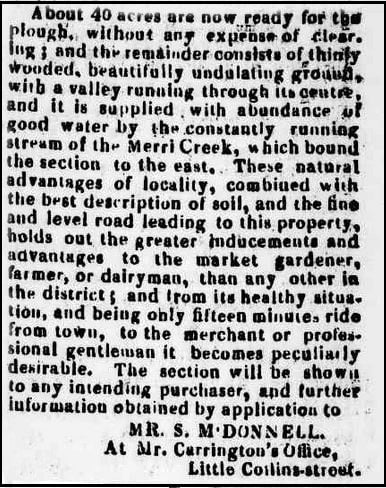

I found Anne’s article to be particularly interesting. I will look forward to reading more from Anne.
Thank you Susan. I’m pleased that you found the article to be interesting. Kind regards, Ann.
Loved Ann’s article. Being a migrant myself it was very interesting to see how immigrants changed the food scene in Melbourne. Love to read more of this type of articles.
Hi Sharmilla, Thanks for your comments. I’m glad you found the blogpost to be interesting. Regards, Ann/
Ann, please take a look at Bruce Pascoe’s Dark Emu and the work of Bill Gammage and revise your erroneous characterisation of indigenous people as itinerant foragers constantly on the move.
Thanks Susanna. Yes, I took that information from the resources on Indigenous Australians that I have access to at home, which were all published before Dark Emu was released. I have now updated that section of the blog. Regards, Ann
Thank you Ann for all the hours of research work that would have been put in to create this Taste of Home blog. It is well presented- small chunks of writing interspersed with pictures and the bonus of hyperlinks, made for a very interesting read.
I value that you have included sources / references for any that want to read further in depth. It has been very interesting to read about what my ancestors would have had access to for food and some of the cost involved and the opportunities it created. I like understanding how the past has influenced today
Thank you Jenny. I’m really pleased that you found the blog post to be interesting. Our Food in Victoria research guide is a particularly good resource for finding further resources.